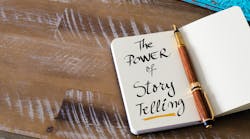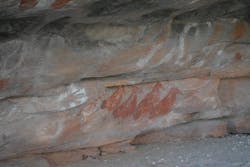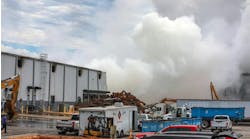Storytelling as a means of communication is a valuable tool to help people learn and retain important lessons. It is not about making things up but rather creating a memorable interaction.
Early in my career, I was involved in the aviation fuel industry. The power of understanding the importance of product-quality checks hits home when you stand below a passenger aircraft and see people boarding — you realize your personal effort makes a difference to their safety.
To ensure traceability, everything had to be documented. Indeed, a wise airport terminal manager once said to me (as I stood below the aircraft watching it refuel), “If it’s not written down, it never happened.” This statement has stayed with me my entire career. However brief, it’s still a form of storytelling, a method to communicate important messages in a way that sticks.
The human brain has an amazing ability to learn all sorts of information, depending on how it’s presented.
With that in mind, let me share a story with you. I recently traveled to a remote and beautiful part of Australia called The Kimberley. This region is in the far northwest of the country. It’s a sparsely populated, rugged area with prehistoric significance. To prepare, I read a book on ancient rock art. However, you can’t really prepare for seeing art believed to be between 3,000 and 5,000 years old that is directly linked to the current indigenous population. From there, we hiked to a beach that featured a shell midden — thousands of years of shells discarded after being cooked and eaten. All these experiences got me thinking about how the First Nations people in Australia had maintained a continuous civilization in harmony with nature for an estimated 60,000 years, and secondly, what can we learn from them in today’s world?
The many different nations of people in Australia had no written language, but they had amazing scientific knowledge and understanding of the environment. They communicated life lessons via stories and rock paintings. The creation stories tell of how features in the earth formed, helping them map out and remember where to find fresh water. The rock art showed what food was edible (illustrations of various animals and plants). The shell middens showed which crustaceans were safe to eat. They had sophisticated methods of making food safe, such as processing various root vegetables to remove toxins before consumption. They then communicated their methods.
In modern society, we seem to focus on the frenetic speed of life. We focus on the present without thinking about the future and passing on lessons. As adults, we often dismiss stories as childish and don’t take the time to share lessons effectively. Sure, we publish bulletins or safety posters showing what went wrong, but we don’t often take the time to share a story or create the emotion to make the learning stick.
The human brain has an amazing ability to learn all sorts of information, depending on how it’s presented. Think about when you hear your favorite song; you know the lyrics and can sing along. This is a form of a story, and something that you remember without even trying. Yet reading a document with a set of facts and details is something we may not always recall.
Storytelling is gaining momentum in business and provides a great way to communicate vital information, such as how we manage process safety. This is because it allows us to use familiar examples to explain unfamiliar things.
So, when it comes to safety in our organizations and our communities, I wonder if we could improve safety outcomes if we took the time to slow down and communicate with stories. Certainly, the impact of seeing people board a plane and knowing their safety depended on me doing my job is a visual story that still resonates.
In your workplace, what are the symbols and stories that help people stay safe in their jobs? What are your shell middens?
Stay safe





